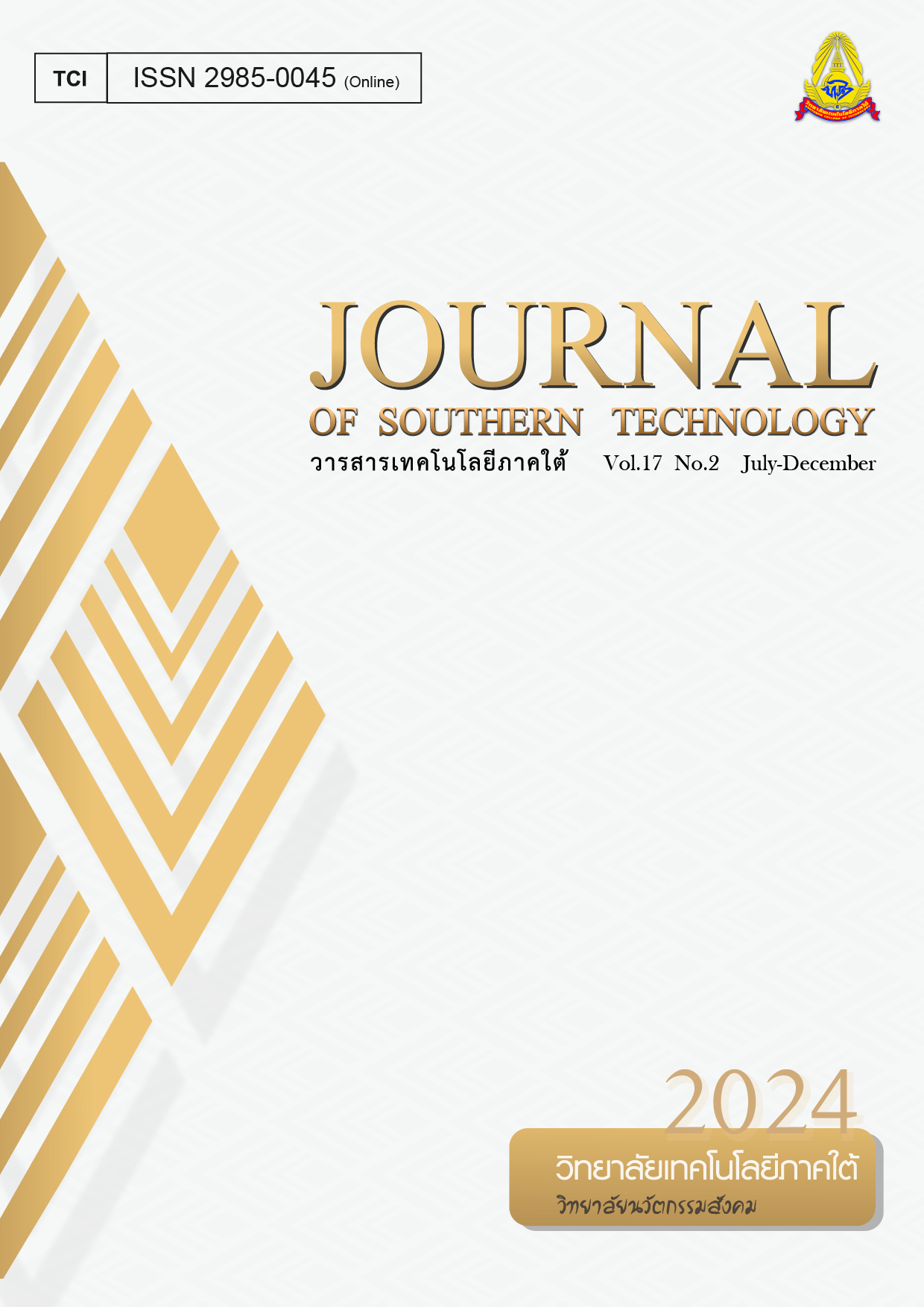การเสริมชุดแอปพลิเคชันการเรียนรู้เชิงรุกสำหรับกูเกิลคลาสรูมเพื่อเพิ่มผลสัมฤทธิ์ทางการเรียนและสมรรถนะของผู้เรียน กรณีศึกษา วิทยาลัยการอาชีพปัตตานี
Main Article Content
บทคัดย่อ
กูเกิลคลาสรูมได้พัฒนาระบบจัดการเรียนการสอนให้ประโยชน์กับสถาบันการศึกษาได้อย่างแพร่หลาย ซึ่งปัจจุบันพบว่า ยังขาดฟังก์ชันส่งเสริมกิจกรรมการเรียนรู้เชิงรุก ส่งผลให้เกิดอุปสรรคสำคัญต่อผลสัมฤทธิ์ทางการเรียนและสมรรถนะของผู้เรียน การศึกษานี้วัตถุประสงค์เพื่อ 1) สร้างชุดแอปพลิเคชันการเรียนรู้เชิงรุกสำหรับกูเกิลคลาสรูมเพิ่มผลสัมฤทธิ์ทางการเรียนและสมรรถนะหลักของผู้เรียน และ 2) วัดผลสัมฤทธิ์ทางการเรียนและสมรรถนะหลักของผู้เรียน กลุ่มตัวอย่างคัดเลือกด้วยวิธีการกำหนดโควตานักศึกษาหลักสูตรประกาศนียบัตรวิชาชีพชั้นสูงปีที่ 2 ของรายวิชาการเขียนโปรแกรมคอมพิวเตอร์ในงานควบคุมไฟฟ้า สาขาวิชาไฟฟ้ากำลัง วิทยาลัยการอาชีพปัตตานี จำนวน 42 คน จำแนกเป็น กลุ่มทดลองและควบคุมที่เป็นอิสระจากกัน เครื่องมือวัดผล ได้แก่ แบบทดสอบวัดผลสัมฤทธิ์การเรียน แบบประเมินผลสมรรถนะผ่านชิ้นงาน และสังเกตการณ์โดยผู้สอน และแบบประเมินตนเองด้านสมรรถนะหลักโดยผู้เรียน การวิเคราะห์ข้อมูลแบ่งเป็น 1) สถิติเชิงพรรณนา ได้แก่ ค่าร้อยละ ค่าเฉลี่ย ค่าเบี่ยงเบนมาตรฐาน มัธยฐาน และความโค้ง 2) สถิติเชิงอนุมาน ทดสอบสมมติฐาน
ที่ระดับนัยสำคัญ .05 โดยการแจกแจงปกติด้วย Shapiro-Wilk Test ทดสอบค่าเฉลี่ยของประชากร 2 กลุ่มที่เป็นอิสระต่อกันด้วย t-Test และ Mann-Whitney Test ส่วน Sign Test ทดสอบความแตกต่างของประชากร 2 กลุ่มที่ไม่เป็นอิสระต่อกัน ผลการทดลอง พบว่า 1) คะแนนสอบก่อนเรียนโดยเฉลี่ยของทั้งสองกลุ่มไม่มีความแตกต่างกัน 2) คะแนนสอบก่อนและหลังเรียนของกลุ่มทดลองทุกคนมีค่าสูงกว่าคะแนนสอบของกลุ่มควบคุม และ 3) คะแนนสอบหลังเรียนโดยเฉลี่ยของทั้งสองกลุ่มมีค่ามากกกว่าคะแนนสอบก่อนเรียน ผลการประเมินด้านสมรรถนะของผู้เรียนโดยผู้สอน พบว่า ผู้เรียนมีสมรรถนะหลักทั้ง 5 ด้านอยู่ในระดับดีมาก โดยมีทักษะด้านความร่วมมือและการทำงานเป็นทีมสูงสุด (ร้อยละ 97.14) รองลงมาเป็นทักษะด้านการสร้างสรรค์ (ร้อยละ 90.48) และทักษะด้านการคิดอย่างมีวิจารณญาณและทักษะในการแก้ปัญหา (ร้อยละ 89.52) ทักษะด้านการสื่อสาร (ร้อยละ 89.52) และทักษะด้านคอมพิวเตอร์และเทคโนโลยีสารสนเทศ (ร้อยละ 89.52) ตามลำดับ ผลการประเมินตนเองด้านสมรรถนะของผู้เรียน พบว่า คะแนนเฉลี่ยของสมรรถนะทั้ง 5 ด้านอยู่ในระดับมาก โดยมีคะแนนเฉลี่ยของทักษะด้านคอมพิวเตอร์และเทคโนโลยีสารสนเทศสูงสุด รองลงมาเป็น ทักษะด้านการสื่อสาร และ ทักษะด้านความร่วมมือและทำงานเป็นทีม ตามลำดับ ดังนั้นจึงสรุปได้ว่า การเสริมชุดแอปพลิเคชันการเรียนรู้เชิงรุกสำหรับกูเกิลคลาสรูมสามารถเพิ่มผลสัมฤทธิ์ทางการเรียนและสมรรถนะของผู้เรียนได้อย่างมีประสิทธิภาพ
Article Details

อนุญาตภายใต้เงื่อนไข Creative Commons Attribution-NonCommercial-NoDerivatives 4.0 International License.
- ผู้เขียนต้องยินยอมปฏิบัติตามเงื่อนไขที่กองบรรณาธิการวารสารกำหนด และผู้เขียนต้องยินยอมให้บรรณาธิการ แก้ไขความสมบูรณ์ของบทความได้ในขั้นตอนสุดท้ายก่อนเผยแพร่
- ลิขสิทธิ์บทความเป็นของผู้เขียน แต่วารสารเทคโนโลยีภาคใต้คงไว้ซึ่งสิทธิ์ในการตีพิมพ์ครั้งแรก โดยเหตุที่บทความนี้ปรากฏในวารสารที่เข้าถึงได้จึงอนุญาตให้นำบทความไปใช้เพื่อประโยชน์ทางการศึกษา แต่มิใช่เพื่อการพาณิชย์
เอกสารอ้างอิง
Anantasiri, R., Tongtawee, W., & Maturos, M. (2019). Development of learning achievement in information and communication technology courses finding information and communicate a computer network with morality Taksin Rachanusorn School by using Quizizz. In The 2nd National Conference on Education (p. 135-147). Phitsanulok: Pibulsongkram Rajabhat University. [In Thai]
Aiemyeesoon, P. (2021). Psychomotor domain assessment. Wipitpatanasilpa Journal of Arts, Graduate School, 1(2), 18-32. [In Thai]
Bonwell, C., & Elson, J.A. (1991). Active Learning: Creating Excitement in the Classroom. Washington, DC: ASHE-ERIC Higher Education Reports.
Boonsathirakul, J. (2020). Developing electronic lessons by using google classroom to practice Yonisomanasikara (Thai Wisdom Thinking). Kasetsart Educational Review, 35(2), 130-141. [In Thai]
Chatkaew, K., & Pymsa-Ard, S. (2021). Active learning management of lower secondary education teachers in Thailand 4.0. Journal of Humanities and Social Sciences, Rajapruk University, 7(1), 136-151. [In Thai]
Chumnasiao, C., & Prasertphorn, V. (2019). Reinforcing learning capacity of learners: base on the educational philosophy and active learning. UMT Poly Journal, 16(2), 438-449. [in Thai]
Klyprayong, R. (2020). Active learning for independent study. Journal of Yanasangvorn Research Institute Mahamakut Buddhist University, 11(1), 104-113. [In Thai]
Leelitthum, C., & Eak-Ieamvudtanakul, P. (2016). Satisfaction of students to google classroom in Thonburi Commercial College. Journal of Mass Communication Technology (Rmutp), 1(1), 20-25. [In Thai]
McClelland, D. C. (1998). Identifying competencies with behavioral-event interviews. Psychological Science, 9(5), 331-339.
Ministry of Education. (2019). Vocational Qualifications Framework 2019. Royal Gazette, 136 (Special Section 56 Ngor), 9-11.
Molenda, M. (2015). In search of the elusive addie model. Performance Improvement, 54(2), 40-42.
Muangkaew, K. (2020). Educational game development in computer course on computer project for students in Matthayomsuksa 6 Yang Talat Wittayakhan School. Journal of Educational Technology and Communications Faculty of Education Mahasarakham University, 2(4), 108-119. [In Thai]
Office of the Vocational Education Commission. (2019). Criteria Higher Vocational Education Qualification Standards, 2019. Royal Gazette, 136(130), 13-18.
Panich, V. (2013). 21st Century Skills. Bangkok: The Sodsri Saritwong Foundation. [In Thai]
Panich, V. (2017). Ways to Create Learning for Students in the 21st Century. Sodsri Saritwong Foundation. [In Thai]
Ritjaroon, P. (2002). Research for Learning Development: Research Practice in The Classroom (3rd ed.). Bangkok: Education Phranakhon Rajabhat University. [In Thai]
Sahapong, T. (2020). Effect of developing the multimedia (Addie model) to enhance the tradition and culture in the subject of development of electronics media for learning. Journal of Technology Management Rajabhat Maha Sarakham University, 7(2), 7-14. [In Thai]
Sararat, S. (2021). An application of the four Iddhipada to active learning English learning. Panya Journal, 28(2), 94-110.
Shaharanee, I. N.M., Jamil, J.M., & Rodzi, S.S.M. (2016). The application of Google Classroom as a tool for teaching and learning. Journal of Telecommunication, Electronic and Computer Engineering, 8(10), 5-8. [In Thai]
Singhad, S., Kittiworawet, S., & Suriya, A. (2018). Achievement and satisfaction of nursing students exposed to google classroom in nursing information technology. Humanity and Social Science Journal, Ubon Ratchathani University, 9(2), 124–137. [In Thai]
Siriluk, W., Prachanban, P., & Parnichparinchai, T. (2014). Indicators development of student’s skills in the 21st century. Journal of Education Naresuan University, 16(4), 155-165. [In Thai]
Sommart, S. (2018). Development of digital media based on Gagne concept by teaching on Padlet in Calculation Program (2204-2103) Course for 2nd year Diploma Degree in Business Computer Students. Vocational Education Innovation and Research Journal, 2(1), 31–38. [In Thai]
Somphakdee, D. (2017). Development of active learning instructional model on information technology for career management for high vocational certificate in accounting. Vocational Education Innovation and Research Journal, 1(2), 67-79. [In Thai]
Spencer, L.M., & Spencer, S.M. (1993). Competence at work: Models for Superior Performance. John Wiley & Sons, Inc.
Supha, R., Gumjudpai, T., & Khomkham, M. (2024). Developing skills and techniques for teaching arduino & robot with Thinkercad for Mathayomsuksa 5 students. The Journal of Research and Academics,7(1), 167-182.
Srisupotchananont, S., & Bamrungkhan, P. (2017). Development analytical thinking skill for industrial program and inventory systems of undergraduates by teaching on Padlet. Vocational Education Innovation and Research Journal, 1(2), 61-66. [In Thai]
Thipkong, S. (2002). Curriculum and Teaching of Mathematics. Bangkok: Develop Academic Quality. [In Thai]
Thongphan, K. (2020). Using google classroom to integrate ICT to support teaching and learning in the 21st century. Journal of Education Naresuan University, 22(1), 13-28.
Tumma, O. (2020). Results for using google classroom of financial report analysis course for undergraduate student’s bachelor of technology program, accounting department. Vocational Education Central Region Journal, 4(2), 37-44. [In Thai]
Vinitasatitkun, P., & Yaemkwanyuen, C. (2022). Active learning: guidelines for best practice in the 21st century. Journal of Educational Innovation and Research, 6(3), 921-933. [In Thai]

